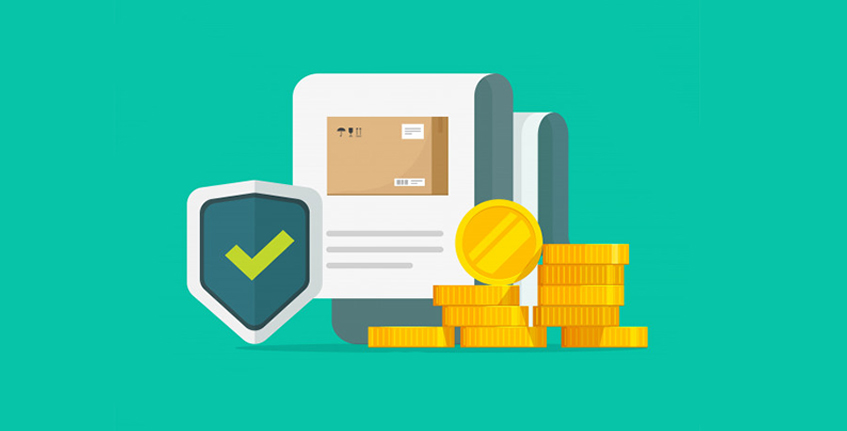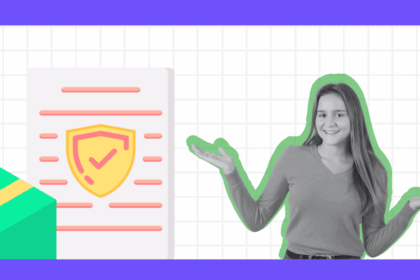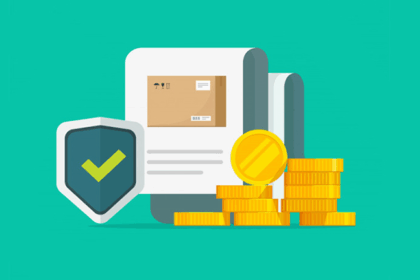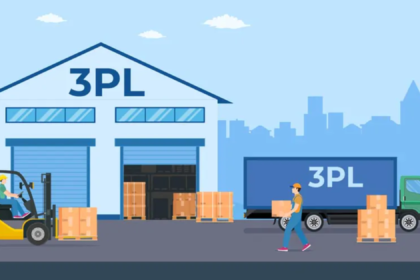A customer places an order from your brand. You pack the product, print a label, book the courier, and track the delivery until it reaches their doorstep. It’s pretty simple when you’re handling a few dozen orders a week.
Now, imagine getting thousands of orders a day.
To keep up, you’d have to lease multiple warehouses, hire and train fulfillment staff, invest in inventory tracking software, negotiate with shipping carriers, and set up a full-time team to manage operations. That’s a massive commitment in terms of time, money, space, and operational bandwidth. For most growing businesses, building that infrastructure isn’t realistic.
This is where 3PL distribution can transform the way you operate. Third-party logistics (3PL) providers take over your warehousing, fulfillment, and shipping processes so you can fully focus on building your brand, not boxing and shipping every order yourself. They help you scale without drowning in operational overhead.
In this article, we’ll explore how 3PL distribution works, what it offers, when to consider it, and how to deal with common roadblocks.
What is 3PL Distribution?
3PL distribution stands for Third-Party Logistics distribution, a service that lets you outsource your warehousing, order processing, and shipping to a specialized logistics partner. These providers manage everything from storing inventory to shipping out products, so you don’t have to.
At its core, a 3PL acts as your fulfillment engine. You send your inventory to their warehouse. When an order comes in, they’ll pick it up, pack it, and ship it directly to your customer. It’s designed to scale as your business grows.
Here’s what a 3PL typically handles:
- Storage and warehousing in secure, climate-controlled facilities
- Inventory management with real-time tracking tools
- Order fulfillment, including picking, packing, and labeling
- Shipping coordination across carriers, with discounted rates
- Returns processing and restocking when needed
- Reporting and analytics to help you stay on top of performance
Say you run a growing skincare brand. Instead of turning your office into a warehouse, you send your inventory to a 3PL distribution center. When a customer orders from you, your 3PL partner gets notified automatically. They pack the product, ship it out, and even handle returns while you focus on marketing and product development.
Whether you’re a DTC eCommerce business, a subscription box brand, or even a B2B seller, 3PL helps you deliver faster without the logistics headache. 3PL is essentially an extension of your business operations.
Core Functions of 3PL Distribution
When you outsource to a 3PL, you’re handing over a tightly coordinated set of services that together form the backbone of your fulfillment operation. Each function is designed to work in sync with the others, giving your business the flexibility to scale, improve accuracy, and save both time and money.
Here’s what you get when you partner with a 3PL provider.
1. Warehousing and Storage
A 3PL starts by storing your products in its warehouse. These 3PL distribution centers are optimized for space, security, and efficiency. They’re staffed by trained teams and built to handle a wide range of product types, whether you sell skincare, electronics, supplements, or apparel.
You don’t need to rent warehouse space or manage shelving and layout. You ship your inventory to the facility, and the 3PL handles everything from unloading to organizing items by SKU. Many providers offer value-added features like temperature-controlled zones or secure storage for high-value goods.
This offloads a major operational burden while giving your inventory a safe, professionally managed home.
2. Inventory Management
Once your products are in the warehouse, they need to be tracked. A good 3PL provides inventory management tools that let you see stock levels in real-time. Most platforms integrate directly with your online store and marketplace listings.
This gives you:
- Centralized inventory data
- Automatic updates when orders come in
- Real-time stock counts and alerts
- Insights into high- and low-performing SKUs
You’ll know when to reorder, what’s selling fast, and which products are sitting idle. That level of visibility helps prevent overstocking, stockouts, and wasted capital.
3. Order Fulfillment
Order fulfillment is where your 3PL really goes to work. As soon as an order is placed, it’s routed to the nearest warehouse. A staff member picks the item from its bin, packs it using your preferred materials, and prints a shipping label. The goal is speed, accuracy, and consistency.
Most 3PLs offer:
- Same-day or next-day fulfillment
- Custom packaging and inserts
- Automated confirmation emails with tracking
4. Shipping and Carrier Coordination
Shipping isn’t just about slapping a label on a box. It’s about getting the package to your customer quickly, affordably, and reliably. Your 3PL chooses the best shipping carrier for each order based on speed, cost, and location and manages the entire process from end to end.
Key services include:
- Carrier selection and discounted rates
- Shipping label generation
- International shipping support
- Real-time tracking and notifications
5. Returns Management
Returns are unavoidable. A good 3PL makes them painless. They receive returned items, inspect them, restock what can be resold, and update your inventory records. Many even offer return shipping labels and branded portals to create a smooth experience for your customers.
Benefits of 3PL Distribution
Now that you know what functions 3PL distribution can take over, let’s talk about why you’d want to hand over those tasks in the first place. Sure, you can build an in-house fulfillment process. However, doing everything yourself becomes a lot harder as your order volumes increase and customer expectations keep rising.
Working with a 3PL helps with building a smarter, leaner operation that grows with you. Here’s how.
1. You Don't Have to Invest in Infrastructure
Setting up your own warehouse requires a long-term lease, storage racks, forklifts, climate control, and an entire team to manage it all. That’s a massive upfront investment and an ongoing expense you’ll need to maintain.
When you use a 3PL, you get access to professionally managed warehouses without building anything yourself. You only pay for the space and services you use, which means lower overhead, less risk, and no need to predict how much space you’ll need in six months. It’s similar to renting a fully staffed logistics department without the headache of setting it up from scratch.
2. You Scale Faster
Say your sales spike during the holidays or after a big campaign. Fulfilling those orders in-house means hiring temporary workers, managing overtime, and praying your team doesn’t miss any shipments.
A 3PL already has the capacity to handle fluctuations. They can scale your fulfillment up or down without delays. Whether you’re sending 100 or 10,000 orders a week, your operations keep running smoothly. This flexibility helps you grow without worrying about whether your backend can keep up.
3. You Ship Faster, with Less Hassle
Today’s customers expect fast, accurate delivery. They don’t care how complex your logistics are; they just want the order to be on time. Without a 3PL, you might struggle to meet these expectations, especially as you expand into new regions. Shipping from a single location limits how quickly you can deliver across the country.
Most 3PLs have multiple fulfillment centers. They automatically route orders to the closest warehouse, reducing transit time and shipping costs. That means faster delivery without added effort from your side and fewer complaints from customers wondering where their package is.
4. You Get Operational Expertise Without Hiring In-House
Logistics is a full-time job. It requires constant monitoring, troubleshooting, and optimization. Doing it well in-house means hiring experienced staff, managing multiple software tools, and solving problems in real-time.
Your 3PL has teams dedicated to doing just that. They’ve worked with businesses like yours, understand fulfillment challenges, and continuously refine their systems for better performance. You benefit from that experience without adding headcount or learning it all yourself.
5. You Stay Focused on Growth, Not Operations
When logistics takes up your time, you’re not focused on marketing, customer experience, or product development, all the things that actually grow your brand. 3PLs give you back that time. They handle the repetitive, behind-the-scenes work so you can focus on building customer relationships and scaling your business.
When to Consider 3PL Distribution
Not every business needs a 3PL from day one. If you’re fulfilling a few orders a week and managing them from your living room, you’re probably fine for now. However, once those few orders turn into dozens or hundreds every day, things start to change. Fast.
So, when’s the right time to bring in a 3PL partner? There’s no one-size-fits-all answer, but there are clear signs that it might be time to take fulfillment off your plate.
1. You're Spending More Time on Shipping Than Growth
If order packing, label printing, and delivery tracking are eating into your time, or your team’s, it’s time to ask if that’s really the best use of your resources. A 3PL steps in so you can step back. You free up hours every week and can focus on growth tasks like customer acquisition, product development, or building partnerships.
2. Your Order Volume Has Outgrown Your Space
Have boxes taken over your office or garage? Are you juggling stock between two storage units? It might be time for a more scalable setup. 3PL providers offer flexible storage. Regardless of whether you’re selling 500 or 50,000 units a month, your inventory is housed in professional warehouses designed to scale with your business.
3. You Want to Ship Faster and Broader
Shipping from a single location makes it harder to deliver quickly across the country or to international customers. A 3PL with multiple distribution centers can get your products closer to customers, cutting delivery times and shipping costs. This is especially helpful if you’re entering new markets or scaling your reach beyond your original region.
4. You're Dealing With Too Many Returns
Returns are normal, but managing them can be chaotic. From issuing labels to inspecting returns and updating inventory, it takes serious effort to get it right. A 3PL provider can streamline your return process so it doesn’t become a bottleneck. Many offer pre-built workflows to make things easier for both you and your customers.
5. Your Current Operations Feel Stretched
Even if you’re managing okay today, think about what happens when demand spikes. Seasonal sales, holiday surges, and flash promotions can break a fragile fulfillment setup. A 3PL acts like an extension of your business. They can handle unexpected growth without forcing you to rush-hire or make last-minute decisions.
What Types of Businesses Benefit the Most?
While almost any product-based business can work with a 3PL, these types see the most value:
- eCommerce brands with growing online orders
- Subscription box companies with monthly shipment cycles
- Retailers expanding into new geographic markets
- DTC brands looking to offer faster delivery across regions
- Crowdfunded product creators preparing for large backer fulfillment
A Quick Checklist: Are You Ready for 3PL?
Answer these questions based on your current operational situation. If you say “yes” to more than a few, it’s time to explore your options.
- Are you fulfilling more than 100 orders per month?
- Are you running out of space to store inventory?
- Do fulfillment tasks eat into your team’s workday?
- Do you want to expand to new regions or countries?
- Are shipping delays or errors hurting customer satisfaction?
- Do you face frequent stockouts or overstocking issues?
- Are you struggling to handle returns smoothly?
- Would automating fulfillment free up time for core business activities?
Challenges in 3PL Distribution
While 3PL can be great, looking at it through rose-tinted glasses won’t help your business make the right choice. Like any partnership, working with a third-party logistics provider comes with its own set of hurdles.
Here are the most common challenges businesses face with 3PL distribution:
1. Letting Go of Control
When you hand off logistics to a third party, you’re also giving up some of the control you’re used to. You can’t walk into the warehouse to check on stock or oversee the packing line. That loss of visibility can feel uncomfortable, especially if you’re used to managing fulfillment in-house.
To stay aligned, you’ll need to build trust in your provider and rely on their reporting and communication. That means checking performance metrics regularly and establishing clear expectations from the beginning. If you’re the kind of operator who needs to control every step of the process, this will take some adjustment.
2. Integration Takes Time and Effort
A 3PL is only as good as its ability to connect with your systems. You may be using Shopify, WooCommerce, or a custom ERP setup, but integration takes time. You’ll need to sync your product catalog, order data, inventory levels, and return workflows.
Getting it right often involves a back-and-forth between your team and the 3PL’s onboarding crew. It’s not plug-and-play. Expect a few hiccups, some testing, and revisions before everything flows smoothly. The good news? Once it’s up and running, you won’t need to touch it much, just enough to keep an eye on performance and updates.
3. Communication Can Break Down
A delayed shipment. A lost return. A customer who didn’t get their package. In these moments, your 3PL’s response time matters a lot. But since you’re not their only client, support can feel slow, disjointed, or impersonal, especially with larger providers.
Avoid this by setting up clear communication channels and escalation paths early on. Assign a dedicated point of contact, schedule regular check-ins, and agree on service levels. You’ll feel more in control when you know who to reach and what response time to expect.
4. Not All 3PLs Offer the Same Service
It’s easy to assume that all 3PLs offer the same services. They don’t. Some specialize in bulky items, others in small parcels. Some excel in international shipping, while others focus on domestic zones. If you pick a provider based only on price or name recognition, you may end up with a partner that’s a poor fit for your needs.
You need to vet them thoroughly. Visit their warehouses (if possible), talk to their existing clients, and dig deep into their tech capabilities. The right fit matters more than flashy sales pitches or big logos on their website.
5. You Still Need to Manage the Relationship
Outsourcing doesn’t mean disappearing. You can’t “set it and forget it” with a 3PL. Even the best provider will need input from your team on product updates, inventory levels, shipping rules, or promotions. If you don’t stay engaged, small issues can snowball quickly.
A strong 3PL relationship requires active Management. You should monitor KPIs, review reports, and provide feedback regularly.
Delivering on the 3PL Promise, All the Way to Your Customer's Door
The goal behind adopting 3PL distribution is to ship faster, store products more efficiently, and ultimately give your customers a better experience. When orders arrive on time, returns are smooth, and updates are clear, your brand builds trust. That’s what keeps people coming back.
However, to truly deliver on that promise, you need visibility, automation, and control over what happens after your 3PL ships the package. That’s where LateShipment.com comes in. It’s a post-purchase experience management platform designed to give you that control without depending on your 3PL for everything.
LateShipment.com’s 3PL Post Purchase Solution helps businesses using 3PLs track every shipment in real time, send delay notifications to customers, and automatically claim refunds for late deliveries, even when your 3PL is handling the shipping. You stay informed, your customer stays in the loop, and your business saves money in the process.
Want to see how it all works together? Book a demo and explore how LateShipment.com can support your 3PL strategy while leveling up your customer experience.
Related Reading:
1. Can I switch 3PL providers if I'm not satisfied with the service?
Yes, you can switch 3PL partners, but it requires planning. You’ll need to migrate your inventory, integrate your systems with the new provider, and ensure order fulfillment doesn’t get disrupted during the transition.
2. How do 3PL providers charge for their services?
3PL pricing models vary but usually include a combination of storage fees (per pallet or cubic foot), pick-and-pack fees (per order or per item), shipping charges, and account management fees. Some providers also charge for setup, returns processing, and special packaging. Always request a detailed pricing breakdown.
3. Is it possible to use multiple 3PLs at the same time?
Yes, many businesses use a multi-3PL strategy, especially if they ship across regions or sell through multiple channels. You can split inventory between providers to reduce shipping times or manage risk. Just make sure your order management system can route orders and sync inventory across locations.





